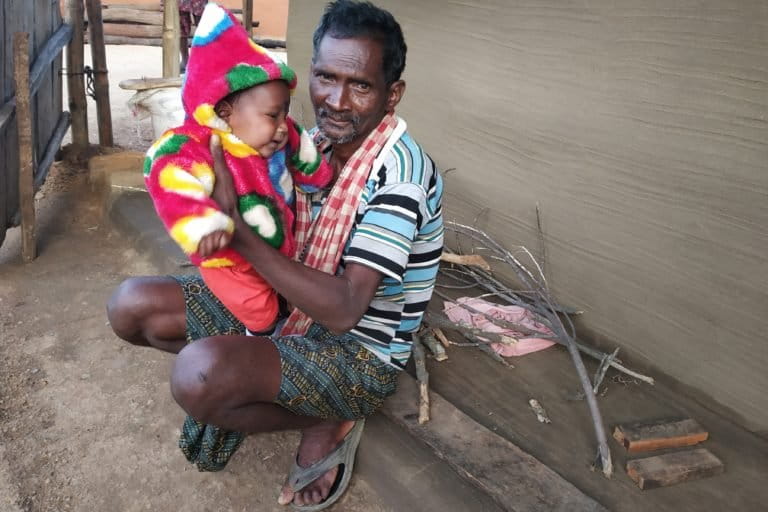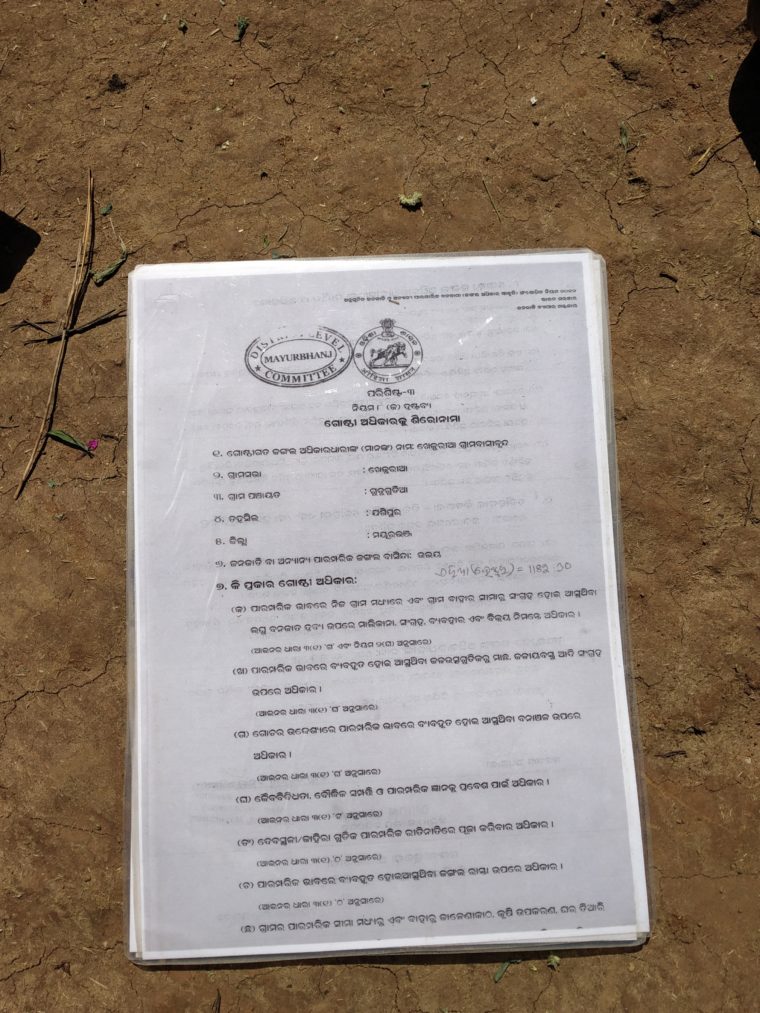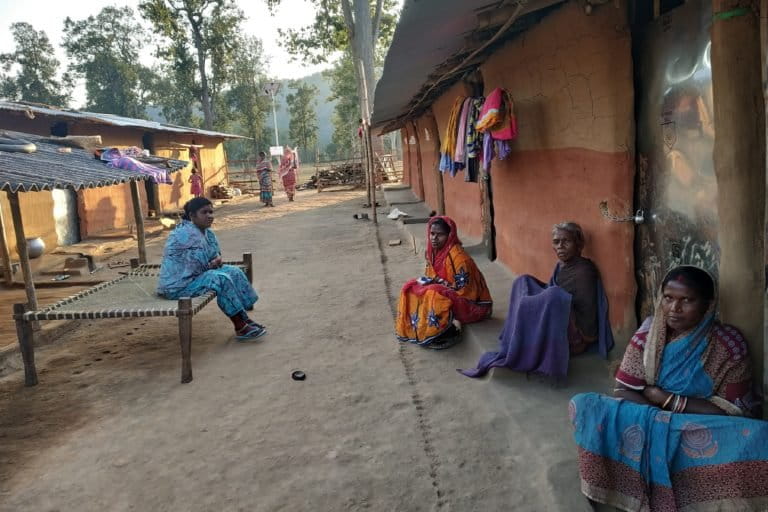- A hundred families belonging to the Khadia community, a particularly vulnerable tribal group, were relocated from Khejuri village in the buffer area of the Similipal Biosphere Reserve to Saleibeda, about 100 km away.
- Khejuri has a recognised community forest rights (CFR) area and its Gram Sabha is the sole legal authority for governance and management. The Forest Department cannot interfere without Gram Sabha’s consent, according to FRA, say activists.
- Environmentalists recommend that for effective conservation, the forest department should work along with the indigenous community that has coexisted with forests for hundreds of years.
Odisha’s Similipal Tiger Reserve (STR), which spreads across an area of 2,200 square kilometres, is caught between the animals, which have earned it national fame, and the local tribal people who have been an integral part of its biosphere.
The Forest Department (FD) at STR says it is facilitating a voluntary relocation process of the tribal people. However, the latter refutes this claim. The local people say they feel cheated by their government and complain that they are being threatened to move out of their ancestral habitations. The impasse of forceful relocation came to light on January 24 this year when over 100 families from Khejuri village under Jashipur block were relocated to Saleibeda of Thakurmunda block in Mayurbhanj district, under the National Tiger Conservation Authority (NTCA) rehabilitation programme. Most of these families belong to the Khadia community – a particularly vulnerable tribal group (PVTG).
Deshabandhu Dehury (70), head of a relocated family, said, “Despite knowing that life will be miserable for us if we leave our native place, we had no option but to shift. The FD officials threatened us of facing dire consequences if we enter forests. They gave us an ultimatum that if we didn’t vacate the place instantly, we would not get any of the relocation benefits they were offering,” he lamented.

NTCA guidelines state that each relocated family (as defined by NTCA) will be given Rs. 10 lakh, which will be deposited in its bank account. However, the family cannot withdraw the money except for higher education or for the marriage of their children; they will receive the interest amount every month.
Anama Dehury, a middle-aged man at Saleibeda said, “We will get Rs 6,000 as interest amount per month for Rs 10 lakh which the FD has promised to deposit in our account as compensation. But, the interest amount will get reduced after I draw money for the marriage of my daughters. After that, how will I eke out my livelihood with no other livelihood opportunity in this alien place?” he asked.
Suffocated sans forests
Deshabandhu added, “The unlimited source of our valuable forest produce – honey, raisin, arrowroots, fishes, mangoes, blackberries, sal seeds, Indian gooseberry (amla), myrobolan, belleric myrobolan, varieties of greens and edible tubers – is no match for the Rs. 6,000 interest amount per month which will keep on reducing after each withdrawal.”

“We used to get around Rs. 50,000 in the three months of honey harvesting season every year. Selling other produce also adds to our income, which is sufficient to meet our daily expenses and save money for the marriage of our children,” he added, repenting that he took the decision to move out of his ancestral land.
Suktu Dehury (40), a member of the Forest Rights Committee of Khejuri, was among the villagers who did not relent to the pressure of the FD. He said, “We got our community rights and community forest rights (CR&CFR) in 2015, under the Forest Rights Act (FRA), which enables us to protect, regenerate and manage forests. It is a formal recognition to generations of contribution to the protection of forest and wildlife.”
“Wildlife population has been increasing in our surrounding forests. We are sighting more animals these days than we saw in our childhood. The reason: Forest cover has been increasing and it is protected from poachers and fire. Earlier, there used to be rampant tree felling and poaching. Outsiders used to sneak into our forests, slipping FD officials’ eyes and most often greasing their palms,” said Jari Dehury (80).
“We have been here for generations. We belong to the jungle and the jungle belongs to us. We may die, but how can we leave our forest to the custody of a few forest officials? What is the guarantee they will protect thousands of hectares of dense forests to which they do not belong?” asked Jari. He reminisced the days when his nephew Charan (40) used to be with them. However, Charan opted to get relocated.

Divisional Forest Officer (DFO) of Karanjia, Prasanna Kumar Behera, said: “The villagers have willingly left their land to be used for habitat formation for wild animals.” To confirm this, he showed a copy of a letter signed by all the relocated people and was submitted to the Deputy Director (North), Jashipur Wildlife Division.
However, the cluelessness of the signatories when asked about the same and their narration regarding their shift from a place of affluence to an alien land with nothing to depend upon, implies incongruities, irregularities and rights violations in the process.

“We are neither hunters nor thieves. I don’t understand why the FD is mad at driving us from the land of our ancestors,” asked Madhu Dehury (60), who claimed that a few weeks ago, he had informed the FD officials about a tusker carcass lying inside the forest.
“Had we been thieves, why would I have informed the FD when I could have sold the tusks for money? It was my father, along with a group of villagers who had rescued tiger cub Khairi and handed it over to Chaudhury Saheb (the then conservator of forests) in 1974.”
Notably, Khairi became synonymous to Similipal and brought it worldwide attention.
Before relocating people, the FD had not consulted with the Hill Khadia & Mankirdia Development Agency (HKMDA), Jashipur, the nodal agency to enhance the living conditions of the PVTGs in the block, said Ajay Kumar Pati, Special Officer, HKMDA. The agency had provided a solar drinking water facility in the village in June 2019 and was about to start an irrigation facility worth Rs 20 lakh. However, they cancelled the plan when they learned about the planned relocation.
Pati, though, pitched for relocation for development and emphasised on proper convergence between the FD and the HKMDA.
Related: Tribal way of life hits rock bottom even as mining hits new highs in Odisha
Plans don’t add up
Karanjia DFO Behera maintained that the government relocation policy was on a voluntary basis and said that some contractors, vested-interest NGOs and individuals are persuading the tribals not to get relocated on the empty promise that they will bring development to the place. “But, no development can be possible in the areas [around Similipal] which come under the sanctuary,” he said.
Criticising the food habits of tribal people, Behera said this relocation is “to bring them to the mainstream so that they can eat modern food, watch TV and use mobile phones.”
He added that apart from Rs. 6000 per month as the interest amount, work will be provided under the Mahatma Gandhi National Rural Employment Guarantee Scheme. Each family will also be given ten decimal homestead land and a house under the Biju Pucca Ghar Yojana. Besides, Vana Suraksha Samiti (VSS) will be formed in the Saleibeda revenue forest and people will get benefits.

However, all these schemes have been non-starters, even though two months have passed since relocation, say the villagers.
According to Anama Dehury from Saleibeda, “Our constant requests to the authorities for providing work are falling on deaf ears. We are sitting idle since we came here. We have no money to spend. The only succour is that we are getting cooked food thrice a day, which will continue for one more month,” he added.
Rules violations
Hemanta Kumar Sahoo, an FRA researcher who has been working with indigenous communities of Similipal for recognition of their community rights over forests, said Khejuri village has a recognised CFR area and Gram Sabha (GS) is the sole legal authority for governance and management of that area. FD cannot interfere in the issue without explicit permission from the GS.
He added that the idea of people-free forests is an ineffective way to manage the environment because it excludes the people who have been an integral part of that particular ecosystem. The Khadias are traditional honey collectors and have no records of disturbing wildlife. The Act further allowed the tribe’s access to the buffer area of a tiger reserve to which Khejuri belongs. Such a move also violates the rights of the PVTGs under the provision of Section 4(2) of the FRA that provides for co-existence with wild.

Adivasis best guardians of forests
“Worldwide, it is now recognised that indigenous communities, who have been co-existing with forests, are the best guardians of the precious resources. Without trying to drive them away from the forests, the FD needs to work with them to strengthen conservation,” said Ranjan Panda, renowned water and climate expert.
In this case, said Panda, the sequence of events shows that the FD has not taken the communities into confidence. Had there been proper consultation with people, the FD would have made smaller investments in augmenting livelihoods and providing basic amenities to the communities rather than investing huge money in relocating them more than 100 km away and throwing them to mercies of a cash-based economy hence making them vulnerable to exploitations and uncertainties, added Ranjan. Here, the people are happy and need their Community Forest Rights respected so that they can continue conserving the natural resources.
Agencies, including the World Bank, have published research reports which support forest rights of indigenous communities and argue that providing them tenurial rights helps in biodiversity conservation, besides supporting the local economy.
Further, the argument that wildlife vanishes from the forests where communities live is not backed by solid research, Ranjan asserted.
Premananda Panda, former director of Scheduled Castes and Scheduled Tribes Research and Training Institute-Odisha, gave the example of Brazil to establish that conservation of forests is supported by tribal people. Brazil had long struggled to contain rampant illegal logging in the state of Maranho. The problem was sorted out when the indigenous tribe Ka’apor took the law into hands and the forest gradually regenerated.